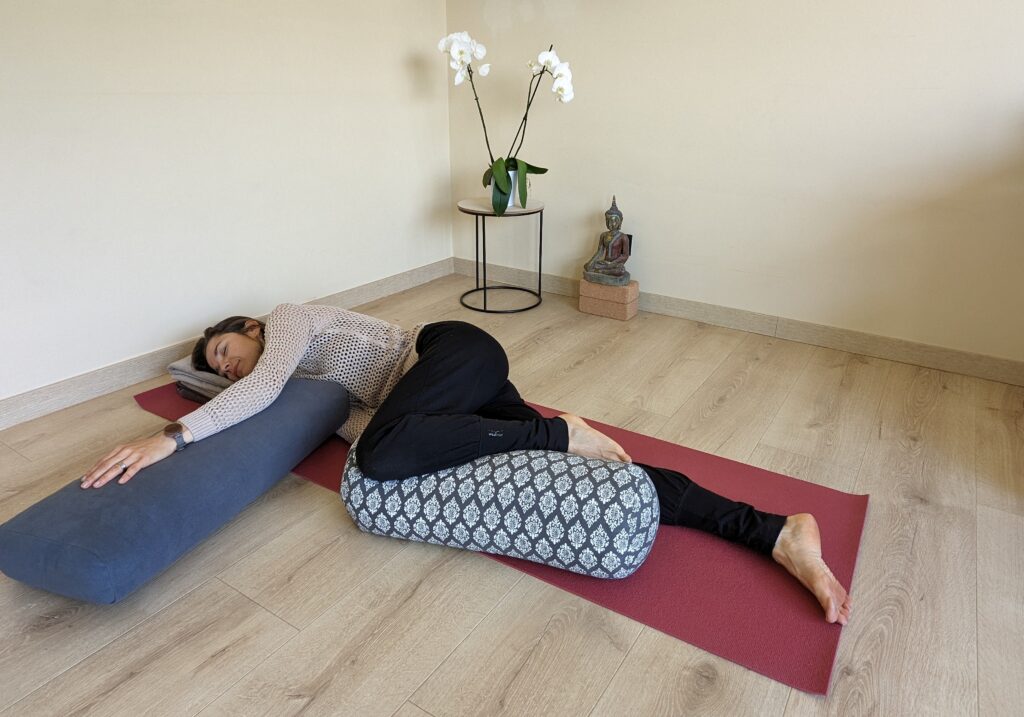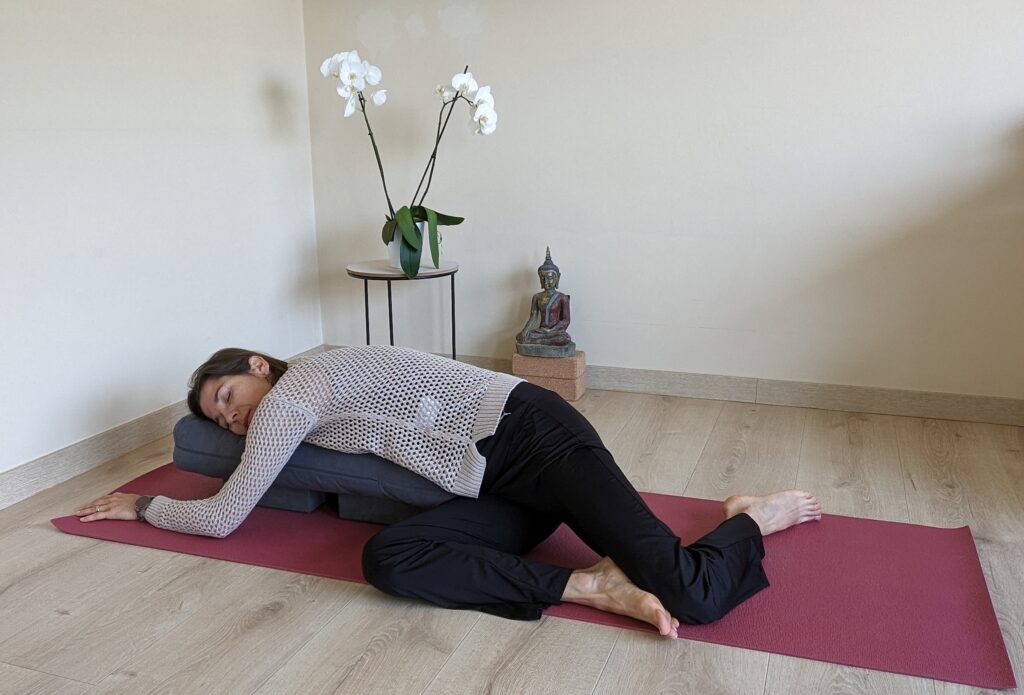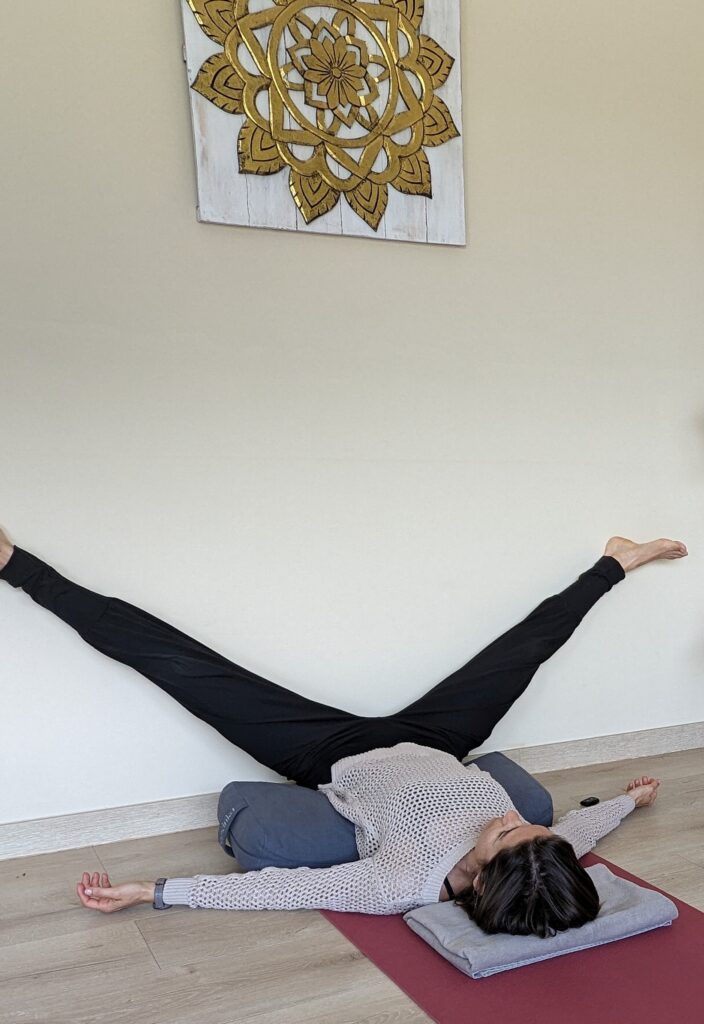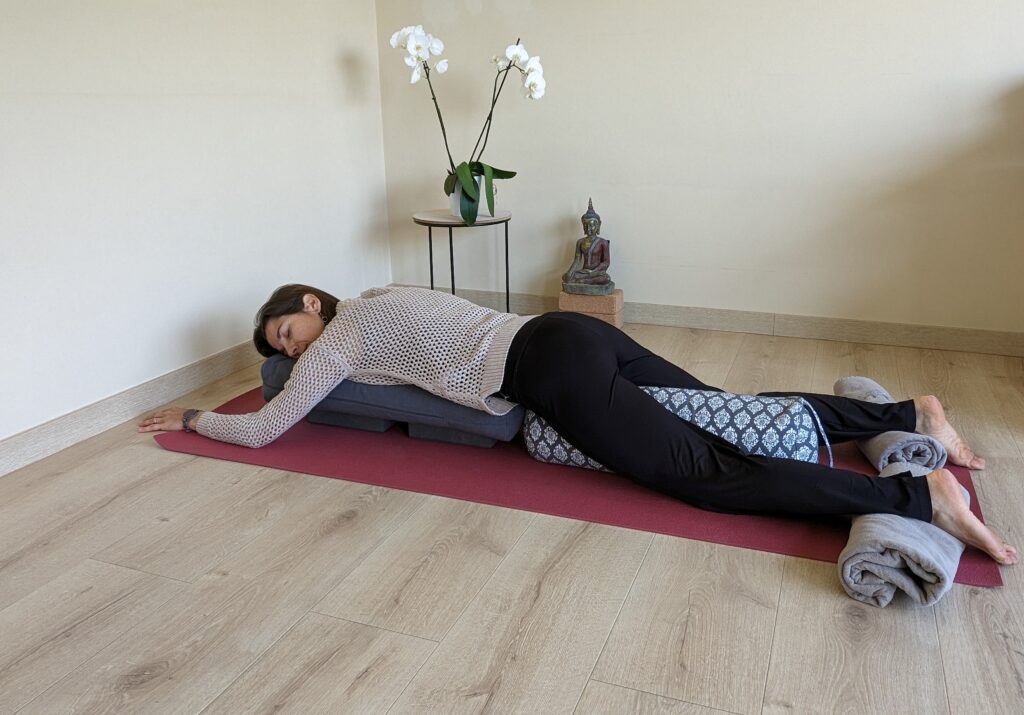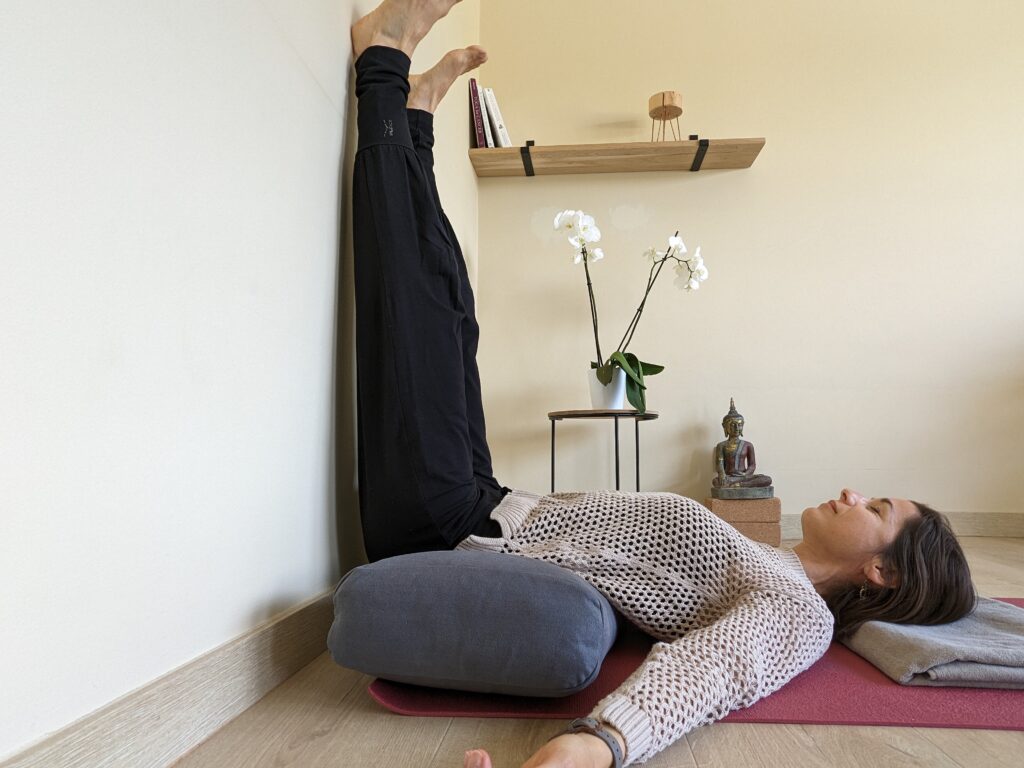What is restorative yoga?
One may argue that all yoga is restorative, and it will probably be true. Yoga in its essence helps to improve your body functions and helps your mind to come to rest. As captured in the yoga sutras, “Yoga is the cessation of the turnings of thought”, this is what any yoga practice is essentially about.
Restorative yoga is distinct from other styles of yoga on the mat. It uses a lot of props, bolsters of different shapes (rectangular, cylindrical), meditation cushions, blankets, towels, blocks, a belt, an eye cushion… The idea behind the support is to make the poses doable and comfortable for anyone, regardless of shapes, sizes, and physical conditions. The poses can be customized entirely to the person, so that he or she can find comfort in the pose and release deeply held physical and mental tension.
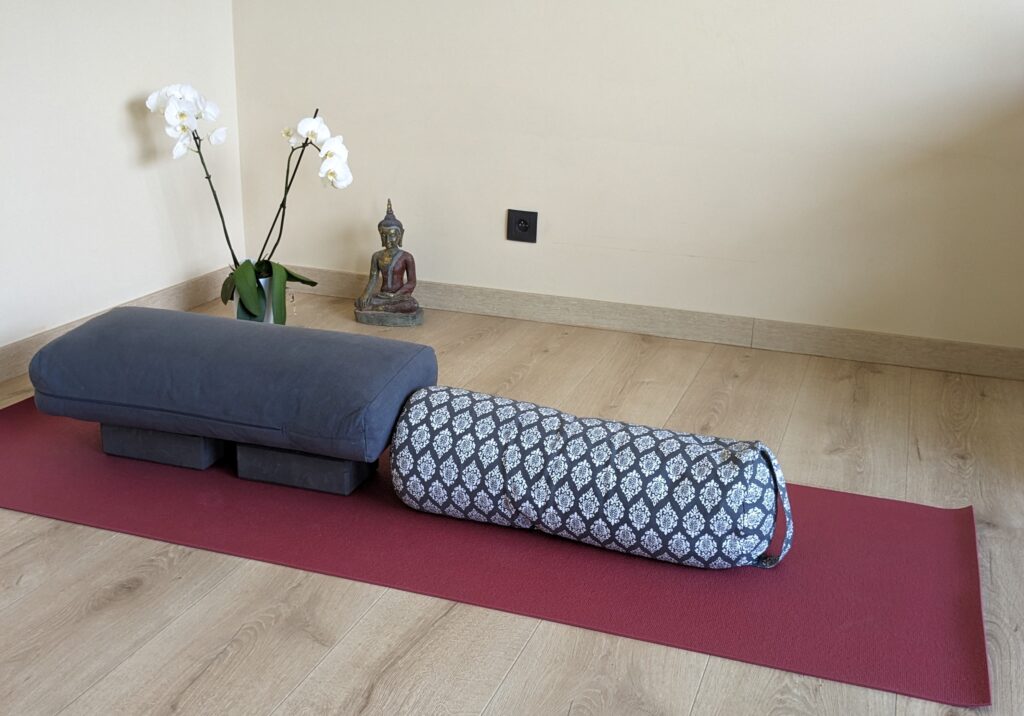
In our rather functional, performance-oriented Western lifestyle we consider we need to reach 10000 steps, do 30 minutes of active exercise per day, so we give to our bodies what it needs. Relaxation is very often either simply not considered, or even worse, many people fear that if they give time to themselves to relax, they will be seen as being lazy. How many times have I heard from my clients that they don’t take a siesta, even though they are sleep-deprived, because they are fearful of what others might think of them…?
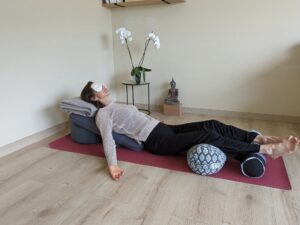
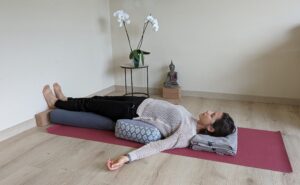
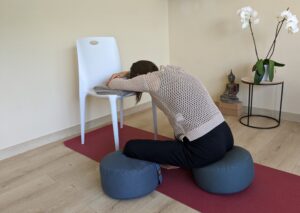
In yoga, on a physical level we do three things: hold (and hence strengthen), stretch, and release. Holding and strengthening is part of so many sports. Stretching is done already way less, and releasing as a concept is hardly known. Learning to release the muscles and deep tension is an art, it’s something we need to practice, just like anything else in life we’d like to master. Restorative yoga helps with this deep release. When you are in a restorative yoga pose, fully supported and with the support personalized to your body, your muscles can release much more than just lying down in your bed. And when your muscles release, this signals to your brain that you’re safe, so your mind can finally start to release, too. The pose and the act of releasing is a major factor in mental release. This mental release is also facilitated by guidance, tuning attention to the body, visualization, and mindfulness exercises while lying in the pose.
Just like with anything, practice can make you a master. The good thing about restorative yoga is that you CAN experience the feeling of deep relaxation much easier if you are in a restorative pose, then if you try to relax in meditation alone. When we keep the practice on a mental level only, it’s actually really hard, and a lot of people stop meditating after the first try because it doesn’t work for them. Yet if you take your body along in the relaxation, your mind will start to react much more easily, and come to stillness. And from there, your mind will start to learn what it’s like to be deeply relaxed and will reach that state more naturally.
Releasing deep tension has many benefits to both body and mind. It helps to regulate blood pressure, improves the functioning of the nervous system, the immune system, the digestive and reproductive organs, reduces headaches, while improves concentration and memory. It is a genuine self-care where you allow your body to restore, to recover its resources, tapping into a feeling of fabulously deep calm.
